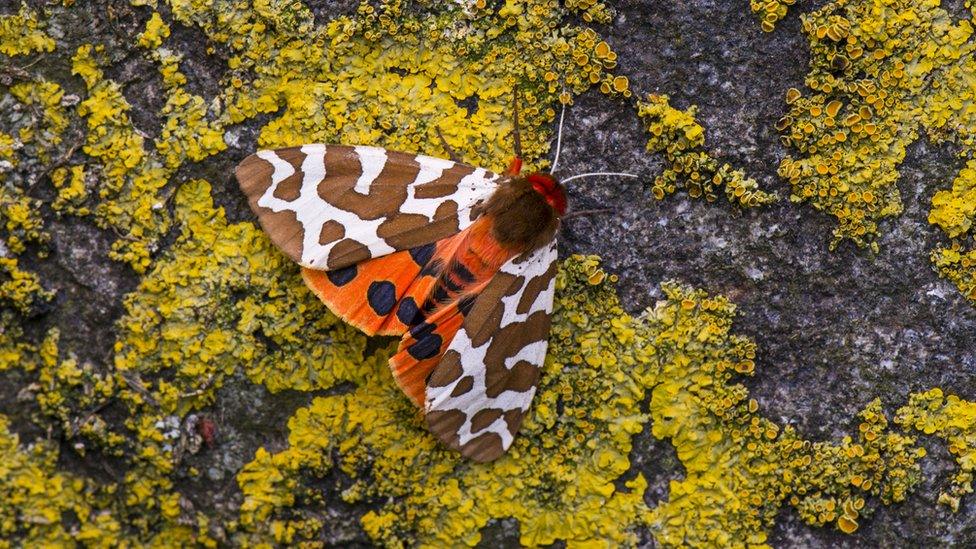Moths: British moths in decline due to climate change
- Published
- comments

The garden tiger moth has declined by nearly 90% over recent decades
Research has found climate change is causing moths to decline in parts of Britain.
The number of moths are adapted to live in cooler conditions.
Scientists think because climate change is causing warmer and drier weather in Britain, this is driving moths to near extinction.
The new report from wildlife charity Butterfly Conservation and Northumbria University looked at what can be done to help.
Why are moths declining in Britain?
The research looked at data collected over a 40-year period, from volunteers of Butterfly Conservation's National Moth Recording Scheme.
It found that moths, who are adapted to cooler weather conditions, have gone north-west where temperatures are lower and some species from warmer drier areas - found in more southerly and easterly parts of Britain - have died out.
The garden tiger is an example of the decline. The numbers of the species fell 89% between 1968 and 2002.
Dr Lisbeth Hordley, lead author of the study, said: "Cold-adapted species, like the British moths in our study, are likely to be the first to struggle as the climate warms.
"Unfortunately, as climate change worsens, more areas in Britain will see the high temperatures that are driving these moths to extinction, so adapting land management to increase water retention is even more important to safeguard such species."
Climate change is causing rising global temperatures and the UK is at risk of having droughts more often.
Last summer was the driest on record for nearly 30 years.
The study found that although extinction of some moths was likely in the warmest parts of Britain, if the annual rainfall was also high in those areas the threat to the moths was reduced.
Researchers believe this is could be because the plants that the moths' caterpillars rely upon for food survive better when there is more rainfall.
How can we help protect moths and butterflies in the UK?
Conservationists now want better water availability in the landscape, such as increasing tree cover, restoring peatlands and slowing rivers which would help to keep water in the area which then benefit the moths.
WATCH: The number of insects is going down. Jenny explains why this is important. (2019)
Dr Richard Fox, Head of Science at Butterfly Conservation said: "Thanks to the efforts of thousands of volunteer moth recorders over the past 40 years, we now know that there is a strong link between warming temperatures and the decline of many species that live in cooler parts of Britain.
Although that's really bad news for the insects, the records gathered...have shown how we can increase the resilience of these species...
Butterfly Conservation say existing Butterfly Conservation projects such as the Bog Squad, which is re-wetting damaged peat bogs in Scotland, are already providing such benefits but much more is required to protect wildlife and people as the climate crisis grows.
- Published11 February 2019
- Published13 August 2022
- Published8 May 2022
